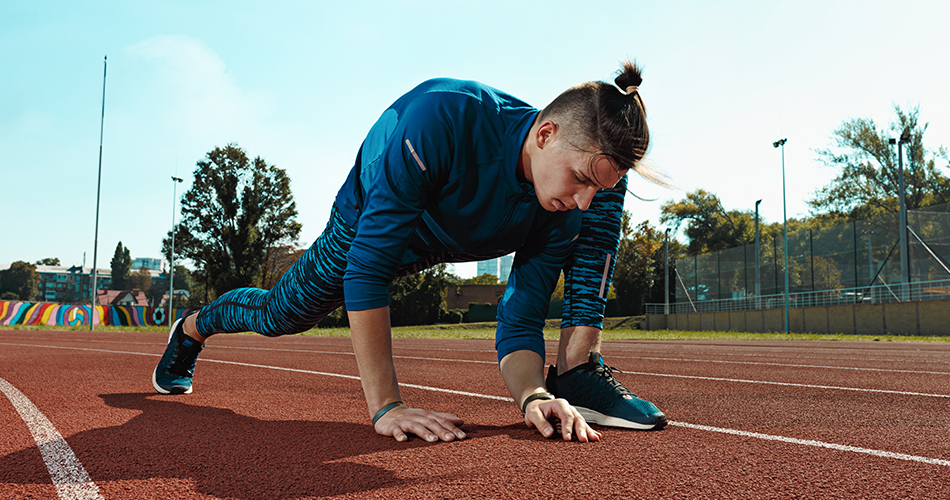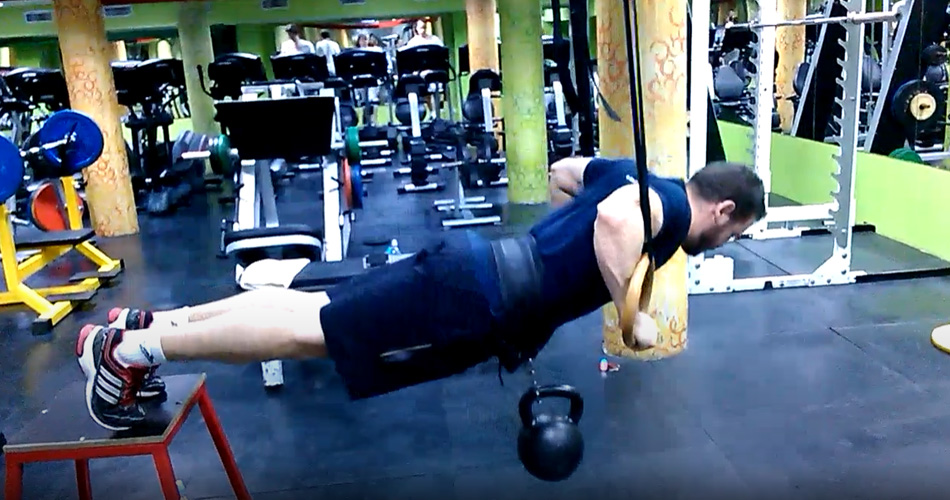T-Spine Mobility
This article will focus on the thoracic spine, which has been subject to changes due to the modern lifestyle and its (mal)adaptations to movement (adaptations to chronic poor posture or repetitive movements). While the previous article was focused more on the client-athlete, this one is applicable to the wider population, as the presentations discussed in this article are based on general postures rather than overloading one particular joint through a specific movement pattern.
The thoracic spine or the T-spine is the longest part of the spinal column, reaching from the neck to the abdomen and is the only part of the spine that attaches to the rib cage. The T-spine consists of 12 vertebrae (T1 to T12), which are quite dissimilar from one another. The T1 vertebra is particularly interesting, as it shares similar features with cervical vertebrae and vertebrae from T8 onwards, which have a greater range of motion (ROM) in the frontal plane (compared to T1-T7) and share more in common with the lumbar spine with each consecutive vertebra. Compared to the cervical and lumbar part of the spine, discs of the thoracic part are thinner, which may be one of the reasons for the reduced ROM. Research has shown that the t-spine allows movement through at least 50° of rotation, 26° of lateral flexion, 25° of extension and at least 30° of flexion in a seated position. These are just some of the characteristics of the t-spine, although we should keep in mind that the T-spine is a part of the thorax, which is why it shouldn’t be treated as a separate unit. The T-spine, in conjunction with the ribs and respiratory muscles, creates some extraordinary movement. It effects the lumbar spine and through joints and muscles also has an important influence on the shoulder joint and pelvic ring.
Vertebrae of the thoracic spine feature attachments to many muscles (including some deep muscles, such as longissimus thoracis, iliocostalis thoracis, spinalis thoracis, semispinalis thoracis, rotatores thoracis, as well as surface layer muscles, such as serratus posterior, latissimus dorsi, rhomboids, trapezius, including quadratus lumborum and iliopsoas …), which can influence the mobility of the t-spine. In addition to the muscles listed above, there are also those that have an indirect influence on mobility and these include muscles attaching to the ribs or the sternum, which have an indirect connection (e.g. pectoralis, serratus anterior, rectus abdominis, external and internal oblique, transversus abdominis and the diaphragm). The human body is a very perplexed structure, and we need to constantly keep in mind that our muscles are interdependent, and that distal joints may also influence muscle activity. As an example, we could take a soccer player with a classic forward head posture, rounded shoulders and increased thoracic kyphosis. This presentation is often accompanied by inhibition of the thoracic spinal extensors, which may be why the thoracic cage is often rounded. Consequently, we see the pectoralis minor coming from the upper ribs to a small bone on the front of the scapula called the coracoid process. The pectoralis minor pulls the shoulder girdle forward and downwards. This action promotes a rounded-shouldered posture, which reduces mobility in the spine and shoulders, respectively.
In addition to muscle imbalances, t-spine mobility is also influenced by other factors. In contemporary society, poor posture has a big influence, as the body adapts to what it repeatedly does. Certain muscles get stronger and tighter, while others, commonly their antagonists, get weaker. The more frequently we move into a forced posture (such as when working behind a computer as a programmer) or go through repetitive movements (such as, for example, with road cyclists), the bigger the adaptation. Apart from poor posture, other mobility inhibiting factors could include spinal cord injuries, compression fractures, nerve inflammation, structural issues (which could also include disproportionate growth in the lower limbs, which effects the shape of the spine), age, previous injury, and, what may surprise many: our breathing. That is, we take from 14.000 to 20.000 inhales/exhales each day. It is, therefore, a repetitive motion, which warrants, just like any other movement, adaptation of the body. Breathing involves a whole range of muscle activity (some of the primary muscles are scalenes, internal and external intercostals, abdominal muscles and the diaphragm, and there are also a lot of accessory muscles working while breathing, like sternocleidomastoid, triagularis sterni, quadratus lumborum, intercostals, latissimus dorsi etc.). Therefore, breathing can also affect our movement and posture through repetitive activation of certain dominant muscles. For example, constantly breathing with the aid of the traps and upper chest forces us into a kyphotic posture and maintains the rib cage rigid. Sometimes we may notice our athletes or clients to present with flat collarbones, which often leads to pain in the shoulder joint. Flat collarbones may be a consequence of a specific breathing pattern, as the sternum moves directly upwards during inhalation. A common breathing patterns also includes hyperinflation, which we notice in people with a wide rib cage (that is, the angle between the sternum and the ribs, sometimes also referred to as the infrasternal angle, is greater than 90°) that is very rigid. Moreover, any specific breathing pattern can lead to mobility limitations. Luckily, there are many experts who have recognised and researched the various breathing patterns and their connections with our posture and movement (PRI, FMS, IFAST), as well as methods and techniques on how to change and optimise these patterns.
As we can see, there are many causes to mobility presentations. That is exactly why interventions may also vary.
An interesting study that was age-related, which we can safely say is something we can’t change (age, that is), including its consequences (to varying degrees), focused on the impact of correction exercises (which included strengthening and flexibility exercises as well as postural training) on age-related hyperkyphosis or ARH. ARH influences forward head posture, reduced respiratory function and inhibited chest expansion. By undertaking an 8-week training programme, subjects improved their kyphosis, head posture and chest expansion length, respectively. Over the 8-week intervention period, their kyphosis improved by 3,45°, while chest expansion and mobility of the rib cage improved by 24,7%. There is hope!
If problems are of a structural nature, then coaches obviously have less influence over outcomes. However, what we can do is detect muscle imbalances, strengthen muscles of the trunk and include mobility exercises and routines into our training.
The following videos include exercises we can include in training programmes for athletes and general population clients alike. The exercises should be tailored based on the individual’s needs, and we should take into account all factors of mobility before we decide to include a certain exercise into our programme.
Side Lying Windmill
The exercise is performed in a side-lying position, whereby we support the flexed leg with a foam roller and activate the core in order to prevent excessive anterior pelvic tilt. We move one arm through a semi-circle and try to maintain the fingers in contact with the ground for as long as possible. After completing the semi-circle, we return the hand into the starting position and begin a new semi-circle. During the exercise, try to maintain a posterior pelvic tilt and fix your gaze on the movement of the hand.
½ Kneeling Band Resisted T-Spine and Shoulder Rotation
This great exercise was taken from the Shoulder and Hip Blueprint seminar by Dean Somerset and Tony Gentilcore. We can perform this exercise in a split stance, tall kneeling, half kneeling etc. In the exercise in the video, grasp the elastic band with the outside arm, activate the core and try to maintain the lower body in a fixed position (try to avoid rotating through the knees and hips). If you can, try to maintain tension in the band throughout, with arms extended. Maintain your gaze on the moving arm.











Responses